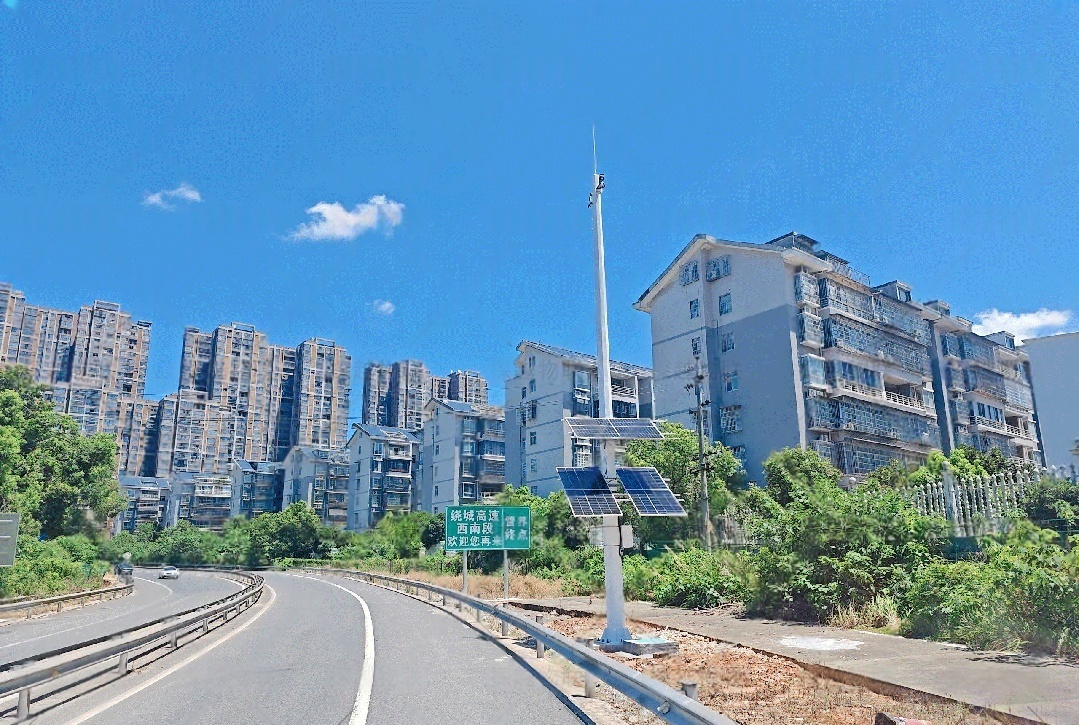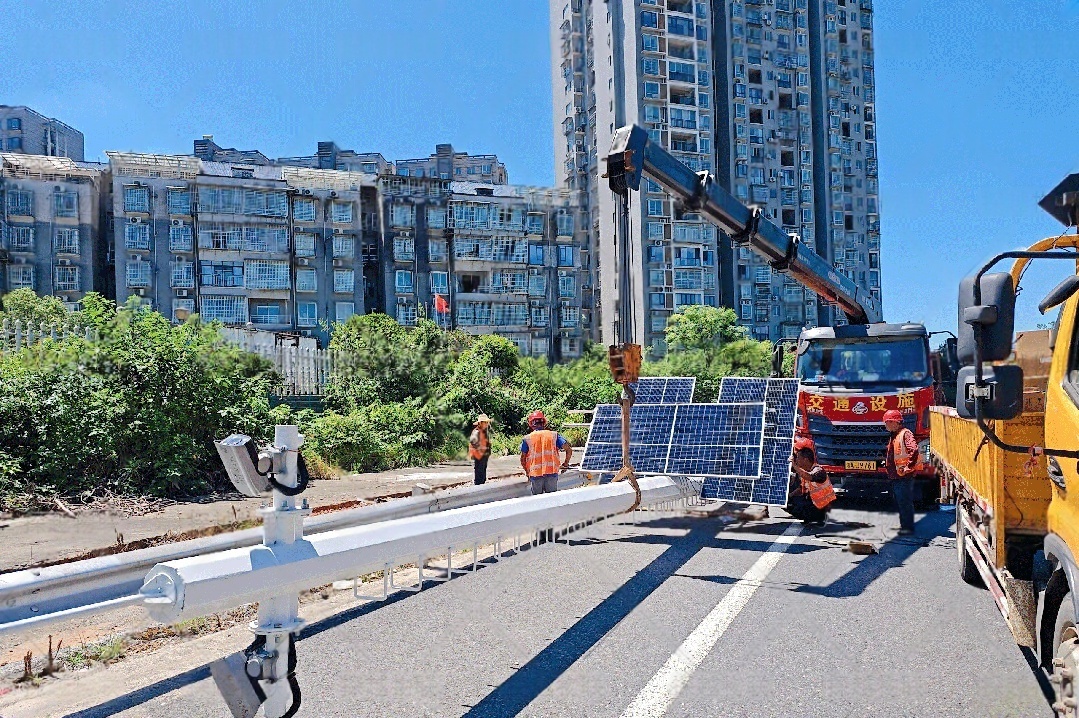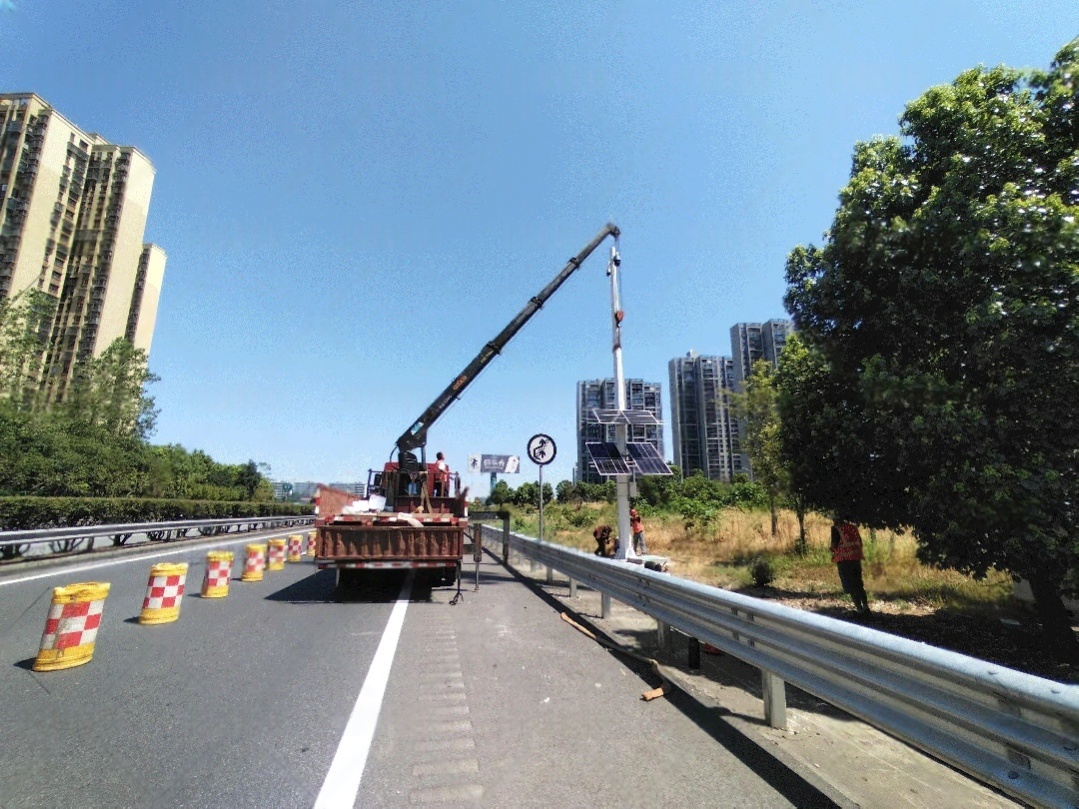Highways across Changsha are extensive, with surveillance points often located in remote sections. Extending grid power requires coordination with multiple government agencies, time-consuming approvals, and extremely high per-kilometer cabling costs. Heavy truck traffic further increases risks—buried cables are often crushed or damaged, resulting in unexpected downtime and the loss of critical traffic incident evidence. Unlike solar-powered CCTV systems, wired solutions struggle with scalability and resilience in these environments.

Changsha has a subtropical monsoon climate, marked by hot and rainy summers as well as damp winters. Traditional single-source power solutions cannot guarantee continuous uptime under these conditions. For high-speed monitoring and violation recording, every interruption can result in incomplete data and delayed emergency responses. This is where off-grid solar power kits provide an advantage.
Surveillance sites are dispersed along highways and interchanges, requiring lengthy travel for on-site inspection and repair. Cable faults can take days to locate and resolve. Routine maintenance combined with high electricity bills creates an unsustainable cost burden. Wireless solar CCTV systems for rural and highway deployments reduce this dependence on manual intervention, optimizing both safety and long-term ROI.
The project integrated a 1515W solar array designed to withstand Changsha’s high temperatures, heavy rain, and dust exposure. Anti-stain and anti-heat coatings improve energy absorption, ensuring optimal conversion even during extreme summer conditions. On sunny days, the power yield supports multiple devices simultaneously, fulfilling the demand for solar powered security systems along the expressway.

A 1200AH LiFePO4 battery bank provides reliable energy storage for extended rainy weather. Unlike conventional lead-acid batteries, LiFePO4 supports a broader temperature range and offers more than 2000 cycles of durability. This design ensures surveillance continuity during consecutive storms, delivering battery powered solar CCTV with LiFePO4 technology for greater reliability.
The system is equipped with an MPPT controller, enabling precise monitoring of solar input, battery status, and load management. Intelligent allocation of energy ensures that cameras and connected equipment receive uninterrupted supply. Remote access via mobile applications provides real-time system status and automatic alerts, reducing the need for frequent patrols. This embodies the all-in-one solar camera power solutions philosophy.
By combining photovoltaic generation with high-capacity storage, the system achieved zero downtime for all surveillance points. This resulted in near-100% data collection integrity, improving the success rate of traffic violation evidence and accident investigations. Compared with wired networks, solar CCTV systems offer unmatched resilience in remote highway environments.

The rugged design incorporates waterproofing, dust resistance, and wind protection. Even during Changsha’s frequent summer storms or periods of extreme heat, the IP66 solar camera power system for outdoor conditions ensured uninterrupted monitoring, supporting smart highway safety management.
With no trenching or cabling required, the project avoided millions in infrastructure costs. The scalable solar surveillance systems also reduced recurring electricity bills and labor costs. Over a five-year lifecycle, the total cost of ownership was reduced by more than 35%, creating long-term economic benefits for government operators and integrators.
The Changsha case highlights how industrial-grade solar kits for surveillance provide a sustainable energy model for highways. The combination of solar CCTV kits with remote monitoring, large-capacity storage, and intelligent distribution creates a blueprint for future smart traffic systems.
The system’s design is replicable across multiple verticals:
✅ Highway and expressway monitoring
✅ Construction sites with off-grid solar kits
✅ Government-led projects using solar CCTV kits for remote areas
✅ Telecom towers supported by solar energy kits
This demonstrates the scalability of solutions from leading China solar power system factories and strengthens trust in solar CCTV kit suppliers from China.
Replacing grid dependency with renewable solar energy reduces trenching and soil disruption, aligning with China’s green transportation initiatives. Clean energy not only ensures monitoring reliability but also minimizes ecological impact, proving that solar vs hybrid surveillance systems are the way forward for sustainable infrastructure.
Solar CCTV systems rely on off-grid solar power kits with battery backup, eliminating the need for trenching and cabling. Wired CCTV systems require grid access, which is costly and vulnerable to damage on highways.
Yes. With 1200AH LiFePO4 batteries, the system stores surplus energy to ensure round-the-clock performance during storms, rainy days, and at night.
Most solutions are plug and play solar CCTV systems, featuring modular panels, controllers, and battery storage. Installation is 50% faster than wired networks.
LiFePO4 batteries are the top choice for solar energy kits for CCTV, offering long lifespans, wide temperature tolerance, and safe operation in harsh climates.
Costs vary by project size, but solar powered surveillance for highways reduces infrastructure and long-term O&M expenses by up to 35% compared with traditional power solutions.
Looking for a trusted solar CCTV system manufacturer to support your highway, mining, or government surveillance projects?
Shenzhen Kongfar Technology Co., Ltd. delivers OEM & custom-built solar kits, CE-certified solar power kits, and scalable solar surveillance systems for global clients.
✅ Proven deployments in highways, telecom towers, smart agriculture, and government projects.
✅ Certified by ISO, CE, and RoHS for international compliance.
✅ Flexible customization, competitive pricing, and global delivery.
 tony@kongfar.com
tony@kongfar.com
 +86 18820186702
+86 18820186702